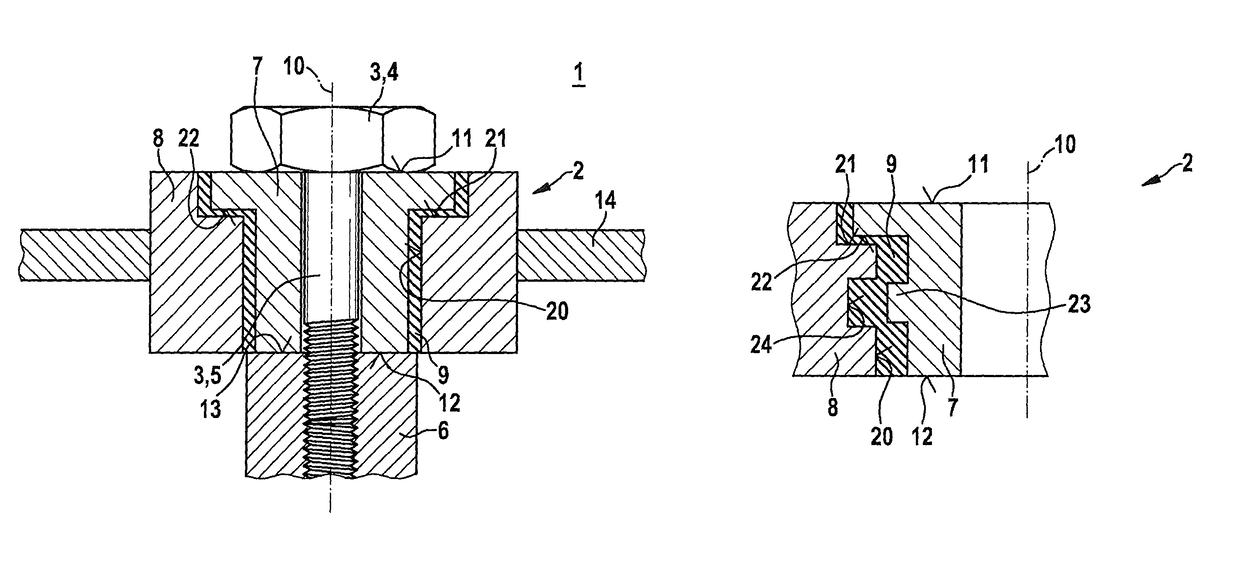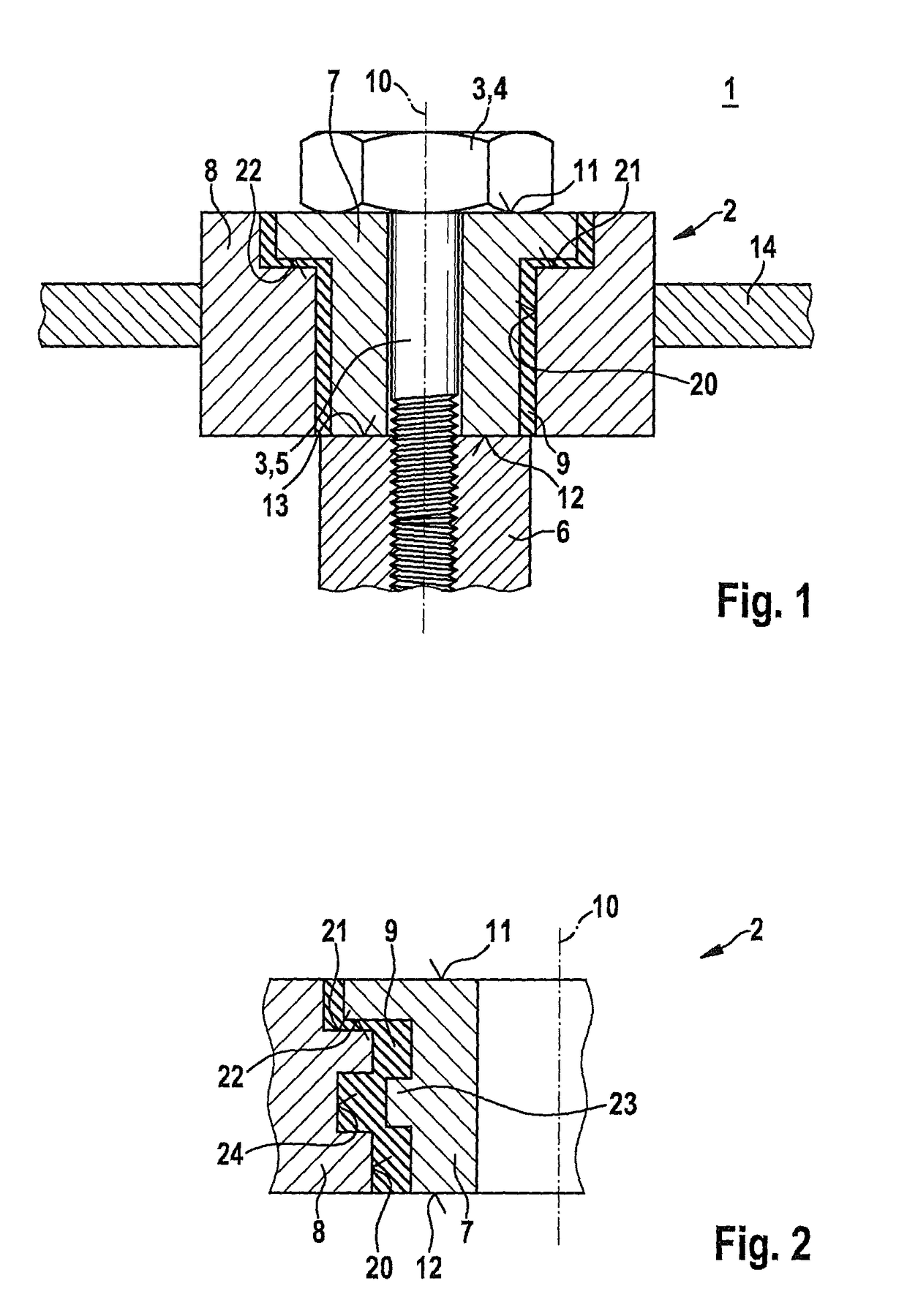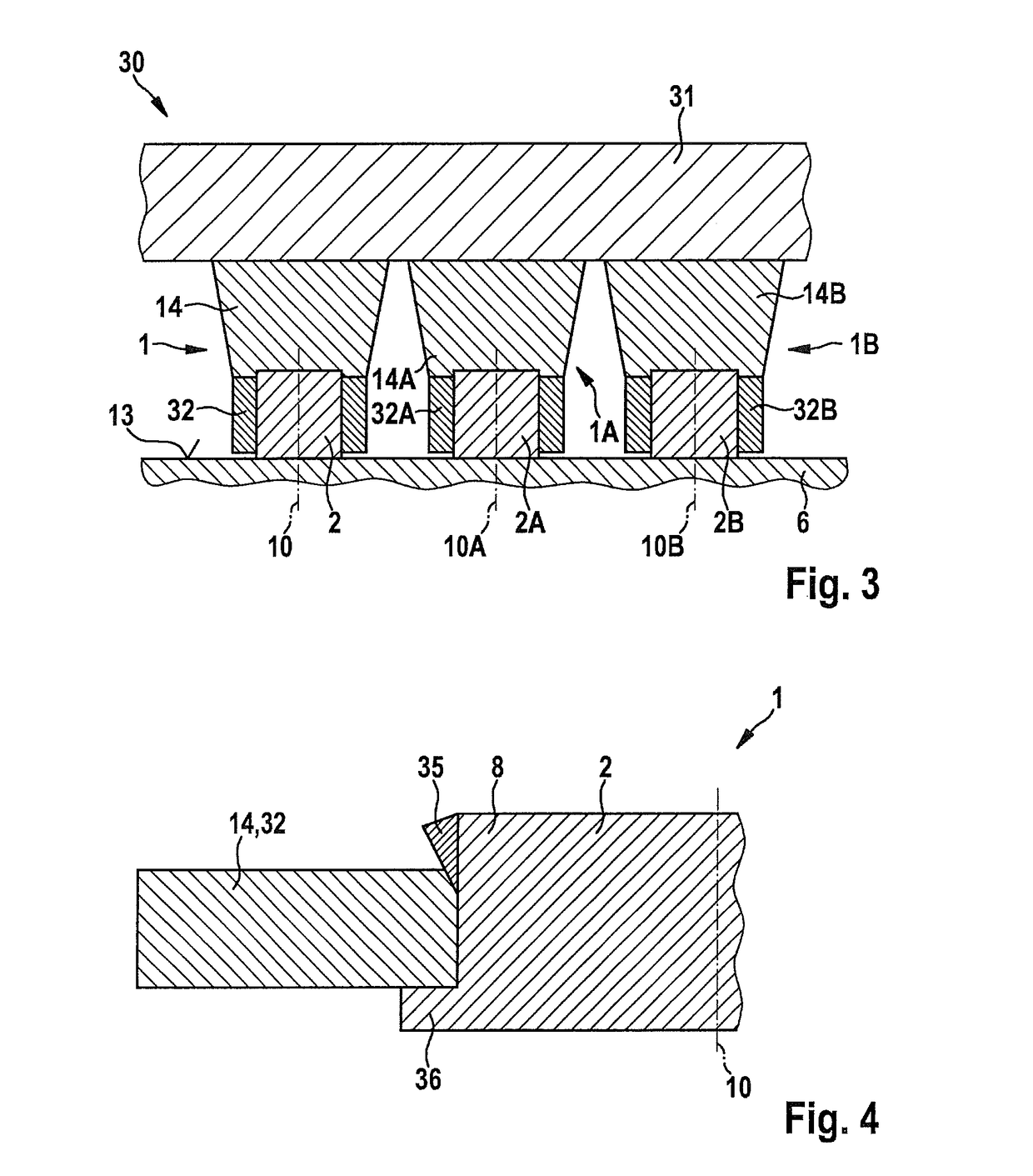Holder for fastening a component on an internal combustion engine, a bearing bush for such a holder, and a fuel injection system
a technology for internal combustion engines and components, applied in the direction of springs/dampers, machines/engines, mechanical equipment, etc., can solve the problem of fuel distributors being excited to vibrations, and achieve the effect of reducing noise emissions and improving vibration damping
- Summary
- Abstract
- Description
- Claims
- Application Information
AI Technical Summary
Benefits of technology
Problems solved by technology
Method used
Image
Examples
Embodiment Construction
[0038]FIG. 1 shows a holder 1 having a bearing bush 2 in a schematic sectional representation in excerpted form, corresponding to a first exemplary embodiment of the present invention.
[0039]Holder 1 has fastening arrangement 3, which in this exemplary embodiment is configured as a screw 3. Fastening arrangement 3 has a head 4 and a bolt (screw bolt) 5. Using fastening arrangement 3, bearing bush 2 is fastened to an add-on structure 6. Add-on structure 6 may be an internal combustion engine 6, especially a cylinder head 6 of an internal combustion engine 6, in this exemplary embodiment.
[0040]Bearing bush 2 has an inner bush part 7 and an outer bush part 8. Furthermore, bearing bush 2 has an elastically deformable damping element 9.
[0041]Bush parts 7, 8 are each formed of a metallic material. In this context, bush parts 7, 8 may also be formed of the same metallic material.
[0042]The elastically deformable damping element 9 may be made of a rubber, that is, an elastomeric layer. Dampin...
PUM
 Login to View More
Login to View More Abstract
Description
Claims
Application Information
 Login to View More
Login to View More - R&D
- Intellectual Property
- Life Sciences
- Materials
- Tech Scout
- Unparalleled Data Quality
- Higher Quality Content
- 60% Fewer Hallucinations
Browse by: Latest US Patents, China's latest patents, Technical Efficacy Thesaurus, Application Domain, Technology Topic, Popular Technical Reports.
© 2025 PatSnap. All rights reserved.Legal|Privacy policy|Modern Slavery Act Transparency Statement|Sitemap|About US| Contact US: help@patsnap.com



